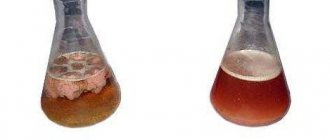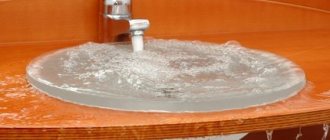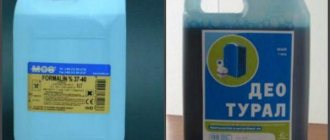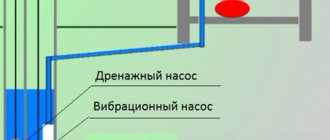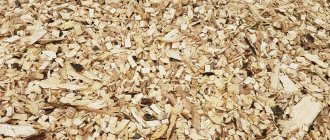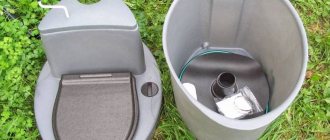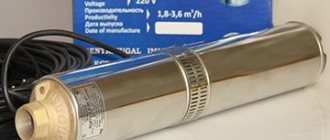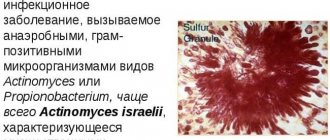Forms of biological products for cesspools
Cesspool bacteria are cultures grown in a nutrient medium that feed on organic matter. Depending on the form of the drug, they are dried (powders and tablets) or made into an aqueous solution. In the preparation, the bacteria are in a dormant state; certain actions are required to activate them. They depend on the form of release and are written in detail on the packaging. Accurate execution of instructions is very important to obtain results.
Regardless of the form of release, most drugs can be used to enhance processing in septic tanks. Dosages change (septic tanks usually have a larger volume than a pit) and the method of “delivery” to the destination. In the case of home drains, bacteria can also unclog the drain. To do this, the drug is poured into the sewer and not used for at least 24 hours. During this time, microorganisms dissolve fats and stuck waste and the water begins to drain better. This is a good replacement for chemicals, especially for septic tanks or for VOCs, because after cleaning with chemicals, the quality of processing noticeably decreases. Otherwise, you will simply add another portion of bacteria, which will only make the wastewater cleaner.
Bacteria for cesspools are released in three types of preparations:
- dosed powders;
- liquid solutions;
- in the form of tablets.
Large selection of products
In principle, the form of release does not matter. The number of microorganisms, their condition and degree of “freshness” are important. All drugs have a limited shelf life. Be sure to check the dates when purchasing. The later the date, the worse - the bacteria could die.
Manufacturers also standardize storage conditions. Usually this is temperature - the drug should not freeze (in theory, it should not even cool below +10°C). It is impossible to know whether the storage conditions were observed. You can only believe it empirically - if the drug does not work, the reason may be that the bacteria died as a result of improper storage.
What to do with bacteria in powder form
Powdered septic tank products occupy the majority of the market. It's convenient: they are packaged in small bags. You usually need to pour out one sachet at a time; more is required only for the initial (first) load. There may be powder inside, or there may be granules - it varies from manufacturer to manufacturer.
Method of using bacteria for cesspools in powder form
As a rule, the powder must be diluted in water, left for a while, and then poured into the cesspool.
Liquid solution for cesspools
This is a concentrated solution of bacteria. Just like dry preparations, concentrates must be “fresh” and stored at above-zero temperatures. Overheating is also not allowed - the upper limit of viability of most bacteria is 40-45°C.
Liquid products usually just pour out
Using sump fluid is even easier. All you need to do is measure the required volume (set in milliliters or caps) and pour it into the hole. Sometimes it is necessary to dilute the drug in water and then pour it away. Everything is clearly stated in the instructions.
Toilet tablets
This type of septic tank bacteria is formed into small discs, shaped like tablets, only with a much larger diameter. There is a certain amount of them in a bag or tube. Each tablet is packaged in plastic film. Before adding the cesspool, the shell is removed and the product is thrown inside.
Tablets for country toilets are simply thrown inside
If the home sewer system is made from a septic tank, throw the tablet into the toilet, wait until it dissolves, and then flush the water.
How to use?
The use of chemicals for wastewater treatment and waste disposal requires compliance with certain rules: the most effective drug may be useless if you do not follow the instructions for its use.
- Before starting work, be sure to read the instructions for use of the product in order to study the composition, method of application and calculate the amount of the reagent.
- You need to get to work by providing yourself with personal protective equipment against the effects of the product on the body, as indicated in the instructions.
- If fecal matter is treated with ammonium salts, the purified water must be removed from the site and cannot be used for irrigation. Water purified with nitrates is used to feed plants.
- Using a product that has expired is not only useless, but also dangerous, given changes in the chemical composition over time.
- If the reagent is used for the first time, it is recommended to purchase a composition marked “start” or “for first use.”
- Nitrogen compounds should not be used for autonomous metal sewer systems: nitrates will be deposited on the walls of the pipes.
- Ammonium salts are used when sealing the storage tank no closer than 20 m from housing in order to avoid evaporation.
- Due to the particular toxicity of formaldehyde and chlorine, it is not recommended to use them for sewer cleaning.
The most effective for cleaning autonomous sewage systems are products based on ammonium salts and nitrate reagents, which are safe for health and the environment, and after use, the treated contents of the cesspool can be used to fertilize the soil.
What effect should you expect?
If you believe the advertising of some preparations for processing waste in sewage pits, barely half the volume of wastewater will remain in it, there will be no smell at all, and the liquid can be used to water the lawn. Reality differs significantly from promises. What you can really get:
- Significant reduction in fecal odor one to two weeks after the first load. If the treatment is carried out regularly, the smell really disappears.
- The volume of wastewater may decrease, but not dramatically. Everything that was in the hole remains in it. The level is reduced due to the fact that the solid components of the waste are processed - they turn into liquid, and the air contained in them is released.
The processed substance is homogeneous and its odor is weak and usually not characteristic (sometimes fragrances are added)
- There will be fewer flies and midges. This is true - bacteria are processed and so are their larvae.
- If bacteria operate normally, the substrate obtained after processing is not toxic or hazardous to the environment. On the contrary, after “ripening” it makes an excellent fertilizer. The resulting slurry can be pumped out with a fecal pump onto a compost heap and used for its intended purpose after two to three years.
Cesspool bacteria can provide these results. They are not able to completely process wastewater to the state of pure or almost pure water.
Folk remedies
If you want to completely eliminate household chemicals, you can also use folk remedies for cleaning plumbing fixtures. They are safe for beneficial bacteria, give a good effect, and provide freshness.
A professional toilet bowl cleaner for a septic tank can be replaced with the following components:
- Table vinegar . You can take a little of this composition, heat it to a temperature of about 40 degrees, and then apply it to the surface of the toilet. It is best to do this at night, because the plumbing fixtures cannot be used for up to 12 hours. After time has passed, all that remains is to wash off the vinegar with water. The concentration is very small, so you don’t have to worry about the septic tank and bacteria. The effect is good - the toilet will be clean, the plaque will come off, and the smell will disappear.
- Lemon acid. You will need two bags. You can use them as a cleaning powder - simply sprinkle them over the entire surface of the dry toilet bowl and rub. The plumbing remains in this state for about half an hour. After rinsing with water, purity will be completely restored.
- Soda. Suitable not only for the toilet, but also for washing in the kitchen, because it copes well with fatty deposits. You can use a saturated solution or a dry composition. Cleaning will also take time. If the plumbing is heavily stained, it will take about two hours to remove it.
Some experts also recommend using Coca-Cola. The popular drink will remove stains from your plumbing in about five to six hours.
Why bacteria don't work
We have already mentioned several reasons - storage conditions were violated or the drug was “old”. In this case, there were simply no viable microorganisms or there were too few of them. But there are other reasons:
- You bought a fake. Popular, expensive imported drugs are especially often counterfeited. So it turns out that the same remedy works for some, but not for others.
- There is too little water in the hole. For normal life, bacteria in a country toilet need a sufficient amount of water. If your hole has no bottom, waste has been stored in it for many years, and the liquid goes into the ground. Even if the entire surface is covered with bacteria, they will not work. In order for them to process organic matter, the medium must be liquid.
- The temperature was too low or too high. Biological products for toilets are effective only at above-zero temperatures. The lower limit varies from product to product; it is usually +5-10°C. Also, bacteria do not like overheating - the upper limit of their “workability” is +40-45°C. Our air rarely warms up to such temperatures, but we must take into account that the decomposition of organic matter occurs with the release of heat, so the liquid can easily heat up to such degrees. The conclusion is simple: you need to add bacteria to cesspools in the spring, when there is a steel “plus” on the thermometer - so that there are no more night frosts.
Bacteria need to create optimal conditions for life.
- The wastewater contains a large amount of active chemicals - bleach, detergents, etc. This environment is detrimental to bacteria; they simply die.
- A crust has formed in the pit. All bacteria that are found in preparations for sewage pits are anaerobic - they require oxygen to live. The crust does not allow oxygen to penetrate into the drains, which is why microorganisms die. If drains fall into a cesspool from a height, they break this crust. At least partially. If the level of waste is already such that the outlet of the waste pipe is below the crust, you will have to break it manually. The easiest way is to pour out a bucket of water, breaking this very crust. In industrial septic tanks there are aerators for this purpose, you can come up with something similar for yourself - throw a hose with holes made in it into the hole and from time to time connect a compressor to it.
- Preparations for country toilets work at a certain acidity. The environment can be neutral or acidic, but in an alkaline environment bacteria are practically inactive. If the cesspool is more than 3 years old and the waste has not been processed before this time, the environment in it is alkaline. In order for the bacteria in the cesspool to work, it is necessary to make the environment neutral or acidic. The easiest way is to pour out a bottle or two of vinegar. After a week, you can add bacteria. But this option only works for sealed pits (in which the liquid does not escape). This trick will not work with dry residue. You can only carry it out by hand.
As you can see, there are many conditions that affect the final result. To make it easier to deal with odors from the toilet and to ensure that waste decomposition is successful, it is better to start processing almost immediately after you start using the waste pit for its intended purpose. If it has already accumulated a large amount of waste, it is more difficult to recycle it.
Reasons for the need for cleaning
Even if you have a septic tank, you will still have to periodically clean the plumbing. Among the main reasons:
- The appearance of pathogenic bacteria . Their reproduction can lead to intestinal diseases and outbreaks of dangerous diseases such as dysentery.
- The appearance of an unpleasant odor . The product should not only provide a disinfectant effect, but also refresh the plumbing fixtures and help ensure that there is no odor in the room.
- Maintaining a pleasant appearance . Due to improper care, a layer of plaque may appear. It is much easier to prevent its occurrence than to try to cope with the consequences.
Let’s try to figure out how to clean plumbing fixtures in the presence of a septic tank, so as not to harm both the container itself and the bacteria used in it.
